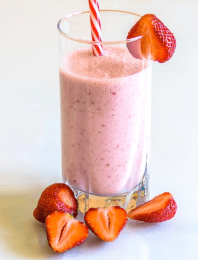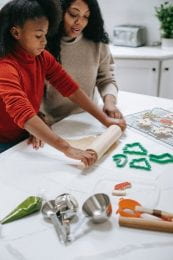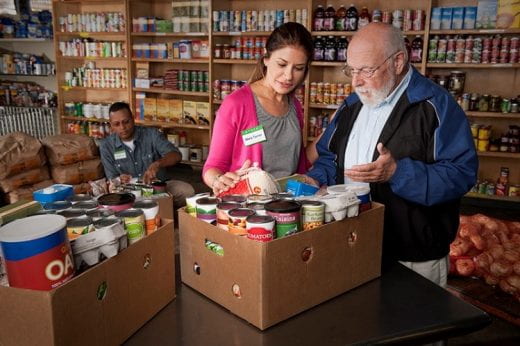Celebrate St. Patrick’s Day with a festive, tasty, and kid-friendly green smoothie.
Ingredients:
2/3 cup 100% apple juice*
½ cup fresh baby spinach**
2 cups frozen pineapple chunks, no sugar added
1 cup low-fat vanilla yogurt***
1 banana
Directions:
- Add apple juice and spinach leaves to blender. Blend first to help make it smooth and avoid leafy chunks.
- Place the remaining ingredients in the blender.
- Blend until smooth and serve.
Nutrition Facts Per Serving (1 cup): 135 calories, 1g Total Fat, 0g Saturated Fat, 35mg Sodium, 31g Total Carbohydrates, 24 g Sugars, 2g Dietary Fiber, 2g Protein
* You can substitute low-fat or nonfat milk or 100% white grape juice for 100% apple juice. Adding milk instead of 100% fruit juice will lower the calories and sugar while adding extra calcium to help strengthen bones.
** You can use kale instead of spinach. Kale does have a stronger flavor than spinach. I like using spinach since it has little to no flavor.
***To make the smoothie even healthier, use nonfat vanilla yogurt or nonfat Greek yogurt instead of low-fat vanilla yogurt.
By: Jamie Rathbun
 Make note cards or use post-it-notes to leave messages on mirrors, in lunches, or other special places.
Make note cards or use post-it-notes to leave messages on mirrors, in lunches, or other special places. Friendship bracelets
Friendship bracelets Adapted from: University of Nebraska-Lincoln Extension
Adapted from: University of Nebraska-Lincoln Extension Rather than a traditional candle, consider lighting up your décor with a small, battery operated flameless one. If you do choose to use traditional candles, remember to blow it out before going to bed or leaving home.
Rather than a traditional candle, consider lighting up your décor with a small, battery operated flameless one. If you do choose to use traditional candles, remember to blow it out before going to bed or leaving home. Then make a plan. It’s okay to start by thinking or dreaming big, then, get real.
Then make a plan. It’s okay to start by thinking or dreaming big, then, get real. Donations of safe and healthy food help provide nourishment to hungry families and also reduce food waste. When organizing or contributing to a non-perishable food drive keep these tips in mind to enhance the health of your local community.
Donations of safe and healthy food help provide nourishment to hungry families and also reduce food waste. When organizing or contributing to a non-perishable food drive keep these tips in mind to enhance the health of your local community.